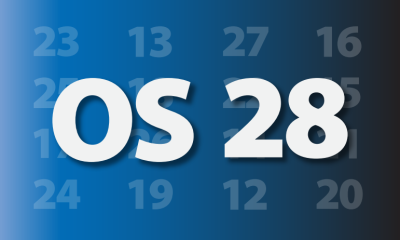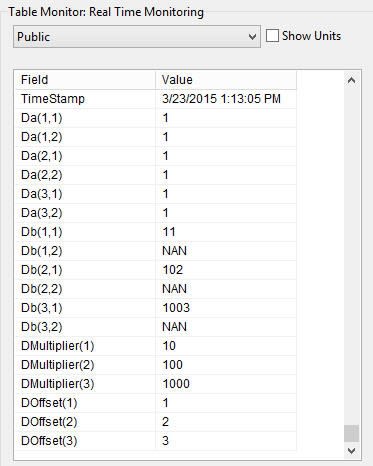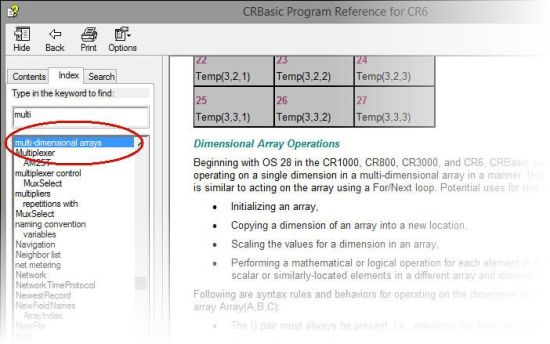4 New Ways to Use Array Notation: Complex Scaling
byJanet Albers|更新:2015年7月1日|评论:0

You canperform more complex scaling in an array without needing a For/Next loop. To take advantage of this feature, useOS 28 (CR6 OS 01) or later.
In this example program, a unique set of multipliers and offsets is applied to the column of an array:
Public Da(3,2) = {1,1,1,1,1,1}'3 rows, 2 columns. All initialized = 1 Public Db(3,2) '3 rows, 2 columns Public DMultiplier(3) = {10,100,1000} Public DOffset(3) = {1,2,3} 'Main Program BeginProg Scan (1,Sec,0,0) 'scale the first column of Da 'by corresponding multiplier and offset 'store the results in the first column of Db Db(-1,1)() = Da(-1,1)() * DMultiplier() + DOffset() 'set second column of Db to NAN Db(-1,2)() = NAN NextScan EndProg
This is what the results look like in the Connect Screen’s Table Monitor:

要最有效地使用OS 28(CR6 OS 01)的新功能,您应该知道一些规则:
- An empty set of parentheses designates an array-assigned expression. For example, reference array() or array(A,B,C)().
- Only one dimension of the array is operated on at a time.
- To select the dimension to be operated on, negate the dimension of index of interest. For example, to operate on the dimension “B,” the syntax is array(A,-B,C).
Note:This new syntax does not affect how repetitions within instructions write to, or read from, variable arrays.To see how to use array notation and repetitions within measurement instructions, watch the “CRBasic|Advanced Programming” video.
Tip:After updating your operating system, it’s a good idea to check your existing programs to ensure they continue to run as expected.
For more information about, and examples of, multi-dimensional arrays, we have several resources to help you. You can search for the section in your data logger manual titled “Array-Assigned Expression.” The CRBasic Editor Help application in LoggerNet is also a good resource. For example, search for “multi-dimensional arrays”:

Recommended for You:要了解有关OS 28的更多信息,请查看“Powerful New Operating System for CR800, CR1000, CR3000” newsletter article. |
Campbell Scientific’s newest data logger operating system (OS 28 for theCR800,CR1000, andCR3000; OS 01 for theCR6 datalogger) enables you to use Array Notation in CRBasic multi-dimensional arrays in new ways. This article explored one of these methods—complex scaling. Two other methods,simple scalingandinitializing multi-dimensional arrayswere discussed in the first two articles in this series. One other method, copying or transposing, will be discussed in an article to follow.
Do you have comments or questions? Feel free to share them.

















 Janet Albers holds the title of Technical Communications Manager; the sign above her office door says, "Coach." She'll share tips, simplify concepts, and guide you to a successful project. She's been at Campbell Scientific, Inc. longer than the CR1000, but not quite as long as the CR10X. After work hours, Janet enjoys the outdoors with her boys and dogs.
Janet Albers holds the title of Technical Communications Manager; the sign above her office door says, "Coach." She'll share tips, simplify concepts, and guide you to a successful project. She's been at Campbell Scientific, Inc. longer than the CR1000, but not quite as long as the CR10X. After work hours, Janet enjoys the outdoors with her boys and dogs.
Comments
Pleaselog in or registerto comment.